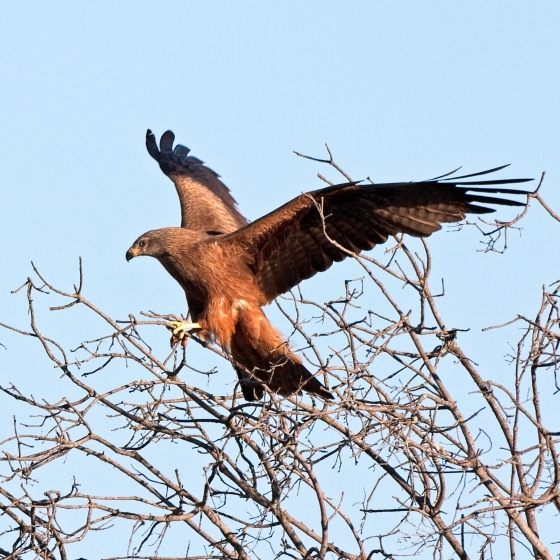Black Kite
Milvus migrans (Boddaert, 1783)
KB
 BLAKI
BLAKI  2380
2380

Family: Accipitriformes > Accipitridae

A regular visitor to Britain from mainland Europe, typically during April and May, Black Kite is more uniformly dark and with a less strongly forked-tailed than Red Kite.
Identification
Black Kite identification is often difficult.
SONGS AND CALLS
Listen to example recordings of the main vocalisations of Black Kite, provided by xeno-canto contributors.
Call
Develop your bird ID skills with our training courses
Our interactive online courses are a great way to develop your bird identification skills, whether you're new to the hobby or a competent birder looking to hone your abilities.
Browse training coursesStatus and Trends
Population size and trends and patterns of distribution based on BTO surveys and atlases with data collected by BTO volunteers.
DISTRIBUTION
This species is a rare vagrant and was recorded during Bird Atlas 2007–11 as shown on the map.
Occupied 10-km squares in UK
| No. occupied in winter | 3 |
| % occupied in winter | 0.1 |
European Distribution Map
DISTRIBUTION CHANGE
This vagrant is too rarely reported to map distribution change.
Movement
Information about movement and migration based on online bird portals (e.g. BirdTrack), Ringing schemes and tracking studies.
An overview of year-round movements for the whole of Europe can be seen on the EuroBirdPortal viewer.
RINGING RECOVERIES
View a summary of recoveries in the Online Ringing Report.
Biology
Lifecycle and body size information about Black Kite, including statistics on nesting, eggs and lifespan based on BTO ringing and nest recording data.
PRODUCTIVITY & NESTING
Sample sizes are too small to report Productivity and Nesting statistics for this species.
BIOMETRICS
Sample sizes are too small to report Biometrics for this species.
Feather measurements and photos on featherbase 
CODES & CLASSIFICATION
Field Codes 
|
2-letter: KB | 5-letter code: BLAKI | Euring: 2380 |
For information in another language (where available) click on a linked name
Links to more information from ConservationEvidence.com
Would you like to search for another species?






Share this page